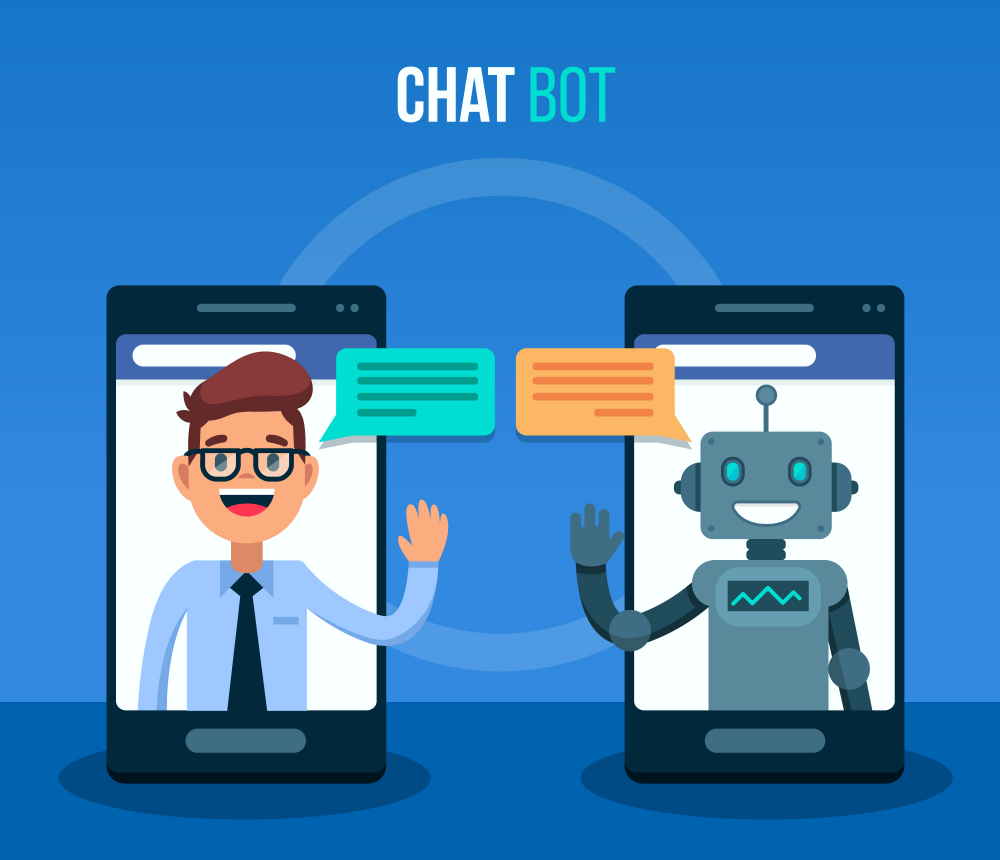Building AI Solutions – A Beginner’s Guide
Share
When you use an AI enabled application like a chatbot, a voice assistant or the smart reply feature in GMail, do you wish you could build a similar smart application too? If you want to know how these applications got their cognitive abilities and in-depth knowledge and learn to build one yourself, you have reached the right page.
In this article we are going to cover a few basic AI concepts and scenarios that can be used to enhance almost any daily-use application. We will also look at options available to build these capabilities.
Finally, we are going to introduce to you a shortcut with which you can build your own mini-AI application within just 15 minutes of reading this article. With some API’s you can achieve this and much more. So let us get started on our AI development journey with some ABC’s.

The ABC’s of AI enabled applications
Robots, chatbots and voice assistants use one or many AI/ML concepts in the background. Let us have a quick look at some fundamental concepts and their applications before we proceed.
AI Models – The building blocks
AI models are algorithms that are “trained” using large datasets to learn and understand patterns. This enables the AI model to intelligently predict an output given some input information, classify items, and much more. An AI-enabled solution typically uses one or more AI models. All of the following concepts are implemented using different types of AI models.
Natural Language Processing (NLP)
NLP allows machines to understand and process input or data that is provided in human languages like English. Chatbots use NLP to understand and process questions from users. NLP is also used in voice assistants, for sentiment analysis of posts on social media and by email providers to understand incoming emails before suggesting a reply.
Computer Vision
As the name suggests, computer vision allows machines to process image data to understand what the image represents. Computer vision can be used for biometric authentication, quality control in factories, automated checkout in retail industry or for medical diagnosis of scans and x-rays.
Voice AI
While NLP helps to process the language semantics, Voice AI deals with natural speech with all possible variations in voice, pitch, fluency, accents and intonations. It is used in voice assistants and many other smart devices and apps that can understand what we are saying.
With this basic understanding we can now proceed to look at the tools, components and steps required to develop an AI based application.
Developing an AI enabled application from scratch
Several businesses today try to integrate AI features in their internal as well as consumer facing applications. Once the requirement for an AI component is established, the development takes place in several steps.
- Data collection: The AI development team needs to determine the inputs and the expected output corresponding to possible combinations of inputs. Data collected thus is cleaned before it can be used to train the AI model.
- Create algorithm: Prediction or classification machine learning algorithms are created that can learn from the dataset. Machine learning libraries such as TensorFlow or Pytorch may be used for this purpose.
- Training: The algorithm is then trained using the data collected. During this process the algorithm may need to be optimized in order to achieve an AI model with high accuracy. Additional data may be required in certain situations.
- Integration: Finally, an AI model with high accuracy can be integrated into the overall solution.
One can directly get to the integration stage by using pre-trained AI models that are available as APIs. These provide solutions for commonly required AI features and may be integrated directly into the overall solution.
APIs can be accessed via simple calls with the input and return the desired output with a high degree of accuracy. Let us see how exactly API’s prove beneficial to the development process and what are the different types of API’s available.
Read more relevant topics
iHack Alpha by Sentient.io Unveils AI Powered Solutions for Business & Social Challenges
Automated Speech Recognition Helps Singapore Government Services Increase Productivity
Five Remarkable AI Solutions that Help to Achieve Business Goals
How Artificial Intelligence Solutions are helping Singapore Companies
AI APIs to shortcut your AI solution building process
APIs help you to cut short your development time and effort. Instead of developing something from scratch, you use features and functions that have been developed and fine-tuned over the years by experts in the field.
When it comes to AI, APIs provide a readymade solution to the tedious problem of collecting and cleaning large amounts of data before you even begin training your model. Different types of APIs available today are.
Open APIs: Also known as a Public API, there are no restrictions to access an Open API as they are publicly available.
Partner APIs: A developer needs specific rights or licenses in order to access this type of API because they are not freely available to the public.
Internal APIs: Also known as Private APIs, only internal systems expose this type of API. These are usually designed for internal use within an organization. By using internal APIs to communicate between systems, an organization can improve the efficiency of its processes and systems.
Composite APIs: This type of API combines different data and service APIs. It combines multiple transactions sequentially so that the client can get the desired result in one API call instead of many calls to the server.
With this introduction to APIs we can now explore Sentient.io API’s in further detail.
Sentient.io APIs to implement expert AI solutions
When it comes to popular AI APIs, you will often find APIs in the fields of Computer Vision, Natural Language Processing, and Voice AI as the use cases are widespread and the research in these AI fields is relatively mature. Sentient.io APIs cover use cases in all of these areas. For example.,
- Computer Vision
- Object Detection
- People Counting
- People Recognition
- Natural Language Processing
- Word-sense Disambiguation
- Entity Recognition (Pick out key entities from a sentence)
- Voice AI
- Speech to Text (Automatic Speech Recognition)
- Text to Speech x1
With this we come to the most interesting part. Let us start calling these API’s from your code and build an AI application.
A Quickstart for using Sentient.io AI APIs
Step 1: Register for free
Users are required to register on Sentient.io in order to start using the APIs. The registration is free of cost.
Step 2: Discover and select the right API for your use case
After registration you can explore the demo apps that are available on the platform. This should give you a fair idea about the capabilities provided by different Sentient.io APIs. For example, the following image shows a demo app that is able to provide identify objects in an image.
Once you have identified an API (Microservice) that you would like to use in your application, you can subscribe to it and use it. A limited number of API calls are free so that you can try the service before purchasing it.
Step 3: Construct your API Call
A typical API call consists of the following components:
Endpoint URL: This endpoint is provided by the API provider, your HTTP request and payload will be sent to this endpoint.
API Key: The API key is a string that is unique to your account to allow the API provider to authorise your request. You can find your Sentient.io API key on the microservice subscription page.
Payload: Here you will include the input information in the format stated in the API Documentation. The API documentation can be accessed from the subscription page on Sentient.io.
With these components ready, you can now construct your request in your development language. With Sentient.io, you can also select from popular languages on the platform and copy the pre-constructed code snippet to your application as shown.
Your application is now AI-enabled. You can initiate a request to the API through the application to ensure that the connection is in place and you are getting the expected response. Thus, in three quick steps you have a ready-to-use AI enabled application.
You may have come across other API providers. The next section tells you how Sentient.io stands out from other similar service providers.
Why should you choose Sentient.io?
Stand out from the competition
AI-enabled solutions not only help to save time and effort, but also complete tasks at scale that would otherwise be considered impossible. In many cases they are able to outperform humans in making accurate predictions. Using AI in your applications will help your app to stand out from the competition, as well as deliver greater value to your users.
AI-enable your app in 10 minutes
With Sentient.io’s APIs you can add AI capability to your applications and solutions in as little as 10 minutes. Sentient.io’s services are domain targeted. This implies that different flavours of the API have been trained using data specific to different domains. For example, if you train an Automated Speech Recognition AI Model on an American accent, it will be optimized for the American accents. Sentient.io’s microservices are optimized for specific domains so that you can get better accuracy when you select the right AI model for your use case.
Reliability and Security
Sentient.io is different from API Platforms who compile APIs from different 3rd parties and are not responsible for their performance. Sentient.io understands that reliability and security is a top determining factor in incorporating APIs into your application. Hence Sentient.io has a variety of Service Level of Agreements (SLA).
What this means is that performance will be guaranteed according to the SLA applicable for that microservice, giving you confidence that you can rely on the service to be up when you need it.
Sentient.io is able to deploy microservices on premise or in an air gap environment. This means that we can deploy our platform completely detached from the internet, this is useful for companies who have very strict security requirements such as government agencies and banks.
Sounds promising? Join us now!
So if you are eager to kickstart your AI development journey, now is a good time. Sign up on Sentient.io as a free user and you receive complimentary 2000 Sentient.io credits that are worth USD $20. These can be utilized to buy additional API usage on Sentient.io.
Use the promo code GetStarted2000 during sign-up.














